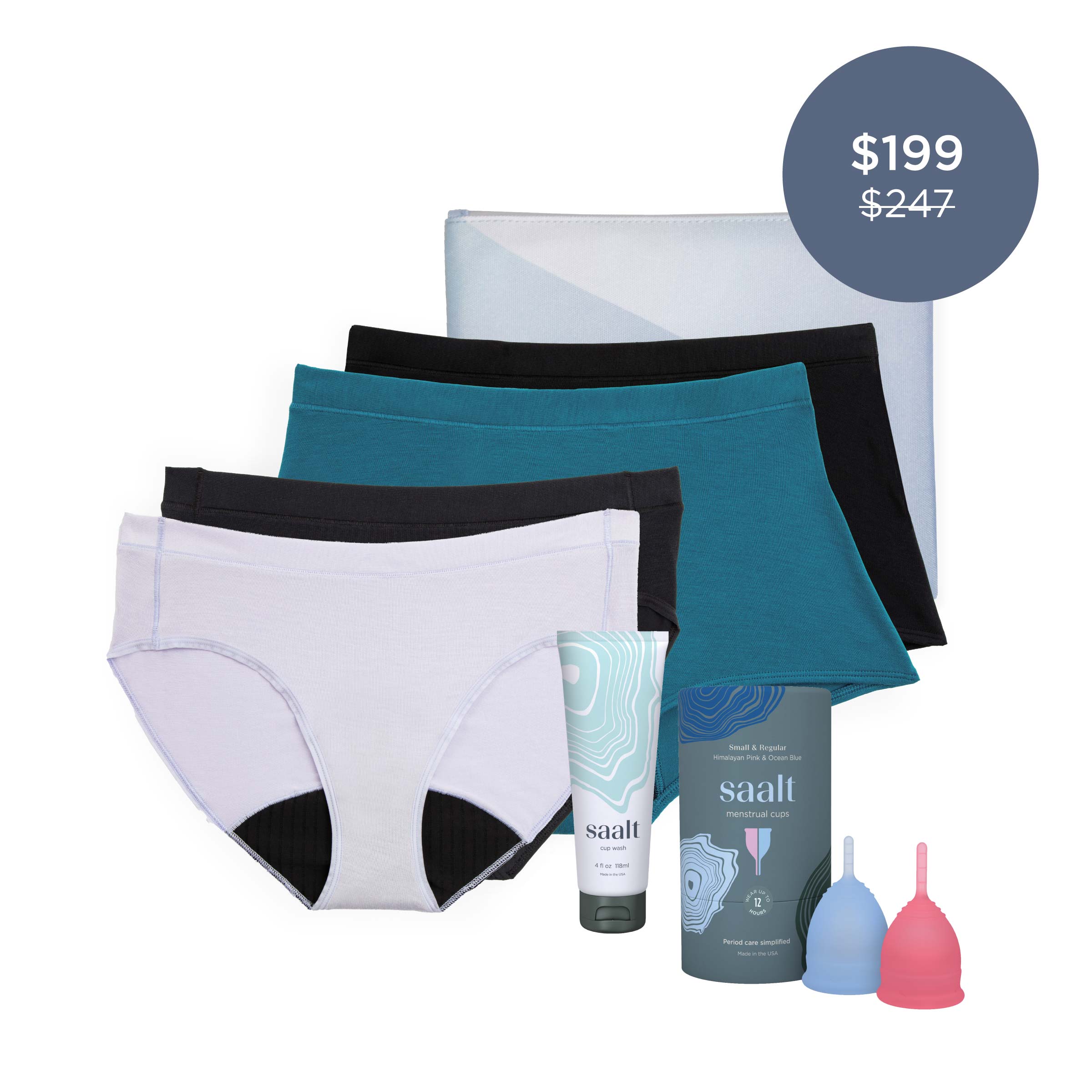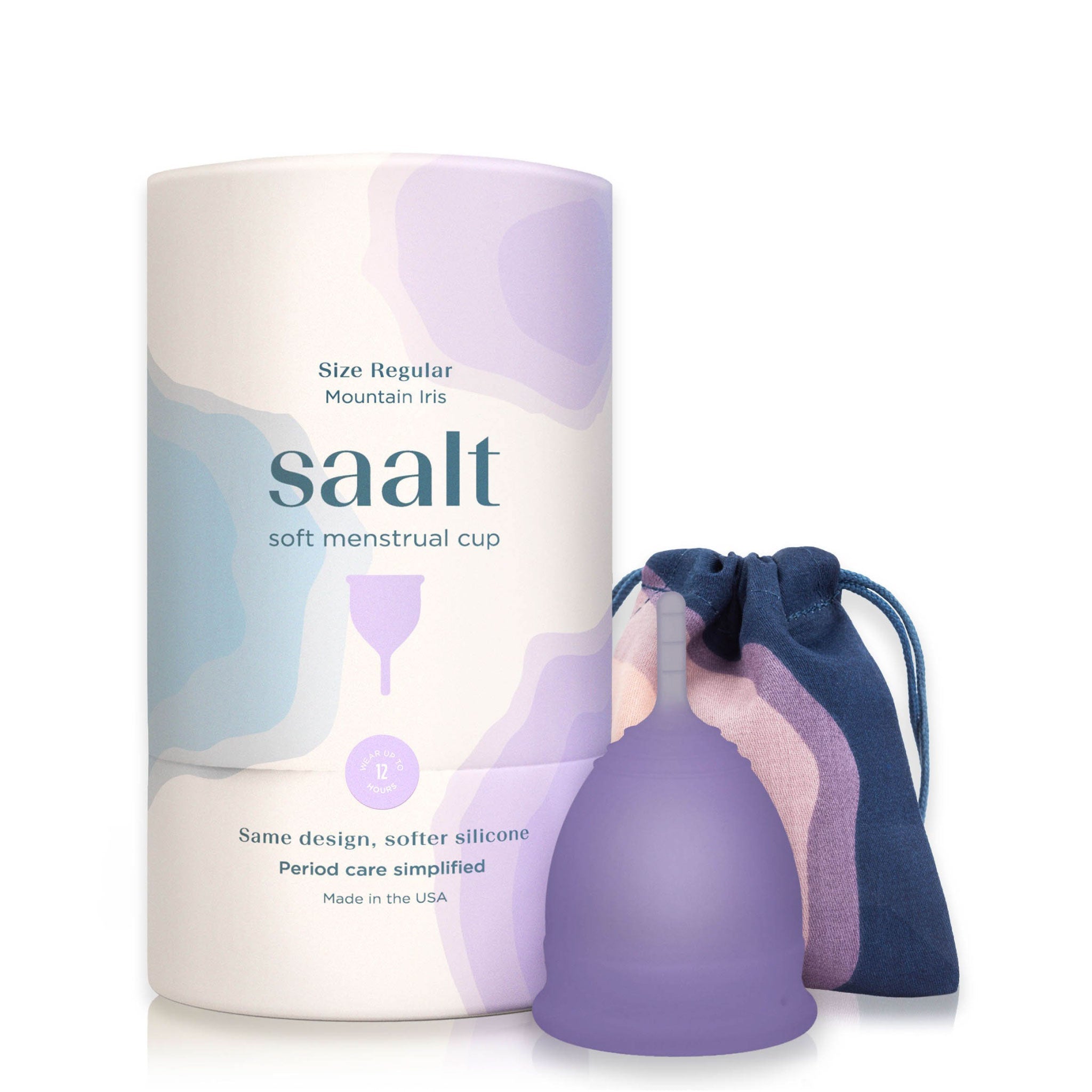Written by: Kathleen Anneke and Alexa Gregg
When birth control burst onto the scene in the 1960s, a wave of liberation swept over the world, and even more so when intrauterine devices (IUD) did away with the sudden panic of realizing you missed a pill. Now, as menstrual cups and menstrual discs make their long-awaited debut, many are questioning whether IUDs and reusable period products can share the spotlight.
As period cups and discs gain popularity, more research is being conducted to confirm their safety and efficacy, in particular answering the question of whether period cups are safe to use with an IUD. Let’s cut right to the chase—when considering the research that has been conducted thus far, there could be an increased risk of IUD expulsion with menstrual cup or disc use. However, it’s important to understand the science, so let’s talk specifics.
To start off, it’s important to note that currently, there are no medical studies assessing the risk of IUD expulsion with menstrual discs. However, there are a few studies that look into IUD expulsion with menstrual cups. It’s important to differentiate between the two products, because menstrual cups rely on mild suction to stay in place, while menstrual discs are held in place by their rim in the vaginal fornix.
A recent study published in OB/GYN in May 2020 concluded concurrent menstrual cup use in women with copper IUDs have an increased risk of expulsion that continues with use. Just under 1,100 women enrolled in what was meant to be a three-year trial, with follow-ups at 6 weeks, then at 3, 6, and 12 months. About ¼ of women in the trial used a menstrual cup (266). However, after 9 months the researchers modified the protocol to advise subjects against concurrent cup use with IUDs due to the number of expulsions in the study. At the one year follow up, 14% of menstrual cup users expelled their IUDs vs 5% of non-users. About half of the menstrual cup users reported expulsion during cup removal. At the two-year mark, expulsion rates in cup users was 23% vs 6.5% for non-users.
A retrospective study done in 2019 published in Contraception reported seven cases of IUD expulsion in cup users. The timeframe of reported expulsion was one week to 13 months and included five levonorgestrel IUDs and 2 copper IUDs. All occurred with cup removal and all reported inadvertent pulling or pinching of their IUD string.
A 2012 study, also published in Contraception, did not demonstrate increased IUD expulsion with menstrual cup or tampon users, but the study subjects were only followed to six weeks after IUD insertion. 930 women enrolled, 10% used menstrual cups (96), 74% used tampons (690) and 43% used pads (402). The expulsion rate at 6 weeks was 2.5%, and no increase among various menstrual product users.
For non cup/disc users, IUD expulsion rates, in general, are 3-10% of copper IUD users in the first year versus 3-6% of levonorgestrel IUD users. IUD expulsion risk factors include a history of prior expulsion, heavy periods, severe cramping, and placement immediately postpartum.
All of this information may feel a little confusing, or even downright discouraging if you’ve been considering using a menstrual cup or disc while having an IUD, but here’s the bottom line—at this point, caution is needed with IUD and concurrent cup or disc use until further research is completed. Put into perspective, both IUD and menstrual cup/disc use have increased in popularity, so don’t ditch either one until more studies are performed. It’s also important to note that the referenced research did not disclose the types of menstrual cups used, nor IUD string length or personal risk factors for IUD expulsion.
That being said, maybe you’re still considering making the switch to a menstrual cup or disc even with your IUD (yay you!). Here are some things you can do to reduce your risk of expulsion. First, talk with your clinician. Consider cutting your IUD string flush to your cervix, so it is not inadvertently pulled with cup removal. If you opt to do this, know that it could be challenging to remove your IUD, but certainly not impossible. Also, if you still get a period with the type of IUD you have, check your IUD string after each menses. Has it changed in length or feel different? If the answer is no, you’re good to go! And lastly, if using a menstrual cup, be sure to break the seal carefully each time you remove it.

If you are uncertain about whether a Saalt Cup is right for you, you may want to consider using a Saalt Disc instead. The Saalt Disc is held in place by its rim in the vaginal fornix (aka the wider area around the cervix), so it doesn’t rely on suction to stay in place. As an added benefit, the Saalt Disc can be worn for no-mess period sex! The Saalt Disc is not a contraceptive and will not protect against STIs, but its low-profile shape and position in the vaginal fornix allows it to be used during penetrative sex. We still recommend consulting with a doctor before switching to a disc, as there is a potential risk of pulling on the string of an IUD while removing a disc. Because menstrual discs are only recently gaining popularity, there is more research needed to determine if they are a better option for IUD users than menstrual cups or tampons. If your doctor recommends avoiding inserted products but you want to opt for a sustainable product, consider period underwear for your leakproof needs.
Learn: are disposable menstrual discs or reusable menstrual discs right for you?
If you feel ready to make the switch to a menstrual cup or menstrual disc, take our quiz to find your best cup match to support you during your period. Our Saalt Menstrual Cups and Menstrual Discs come in different sizes and firmnesses, and our Saalt Disc not only comes in two sizes to fit everyone who menstruates, but was voted NYT Wirecutter's 2024 best menstrual disc pick.
Empowering yourself with the knowledge and tools to be your own best advocate for your health is the key to long-term success with cups or discs and IUDs. Your doctor should be your best teammate when it comes to decisions about your reproductive health, so ask their opinion, weigh the pros and cons, and do what feels right for you and your body.




